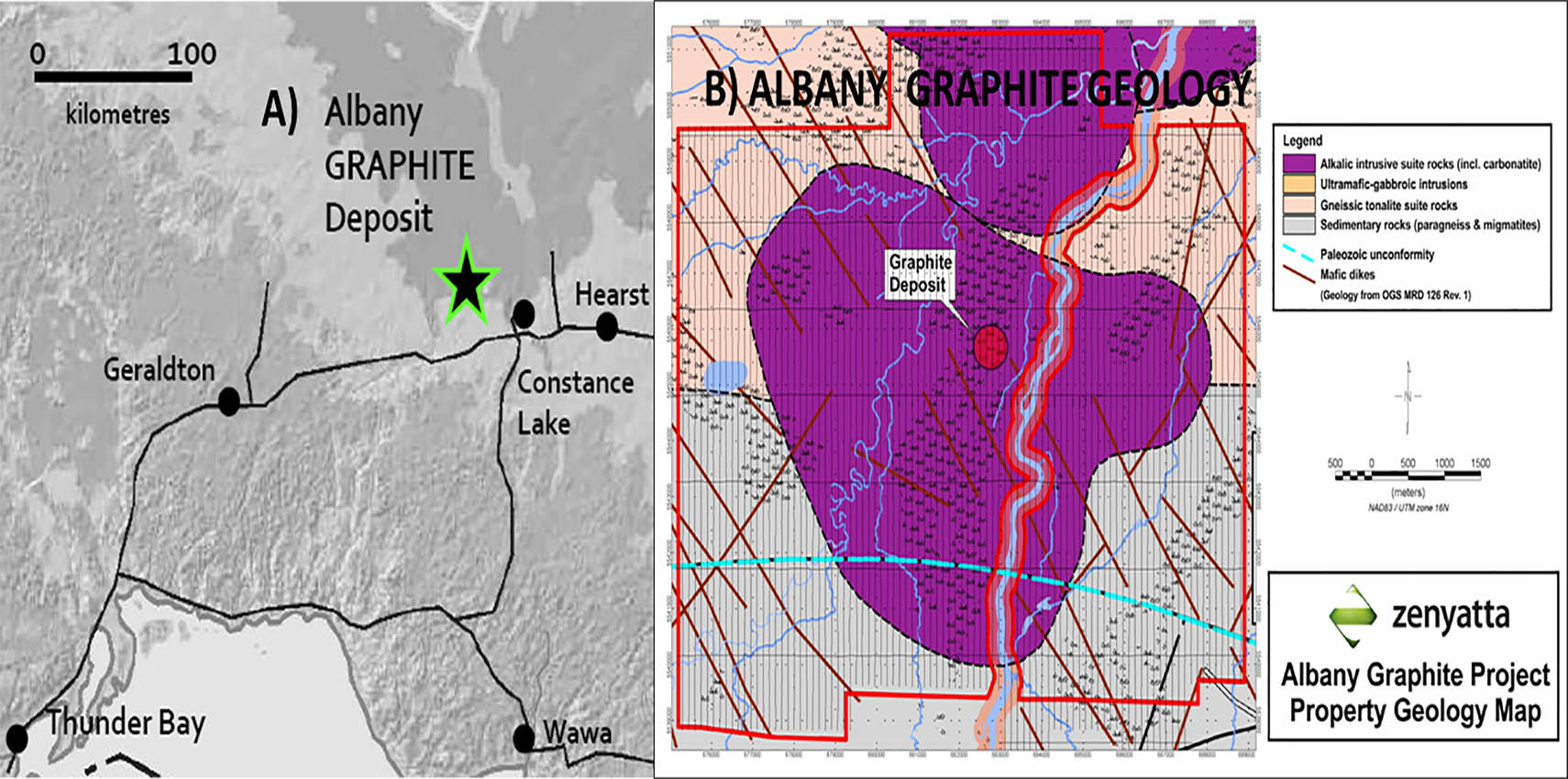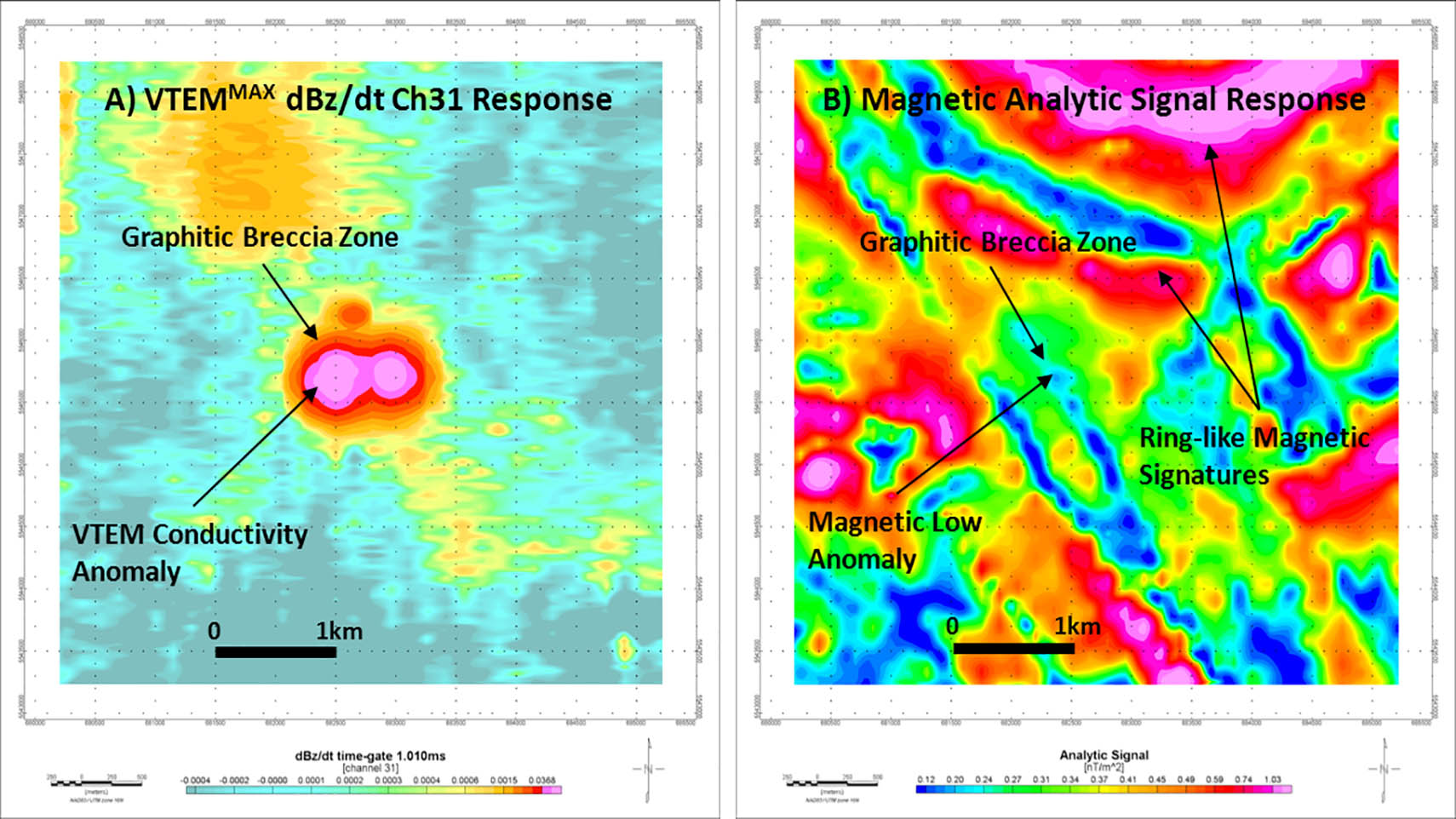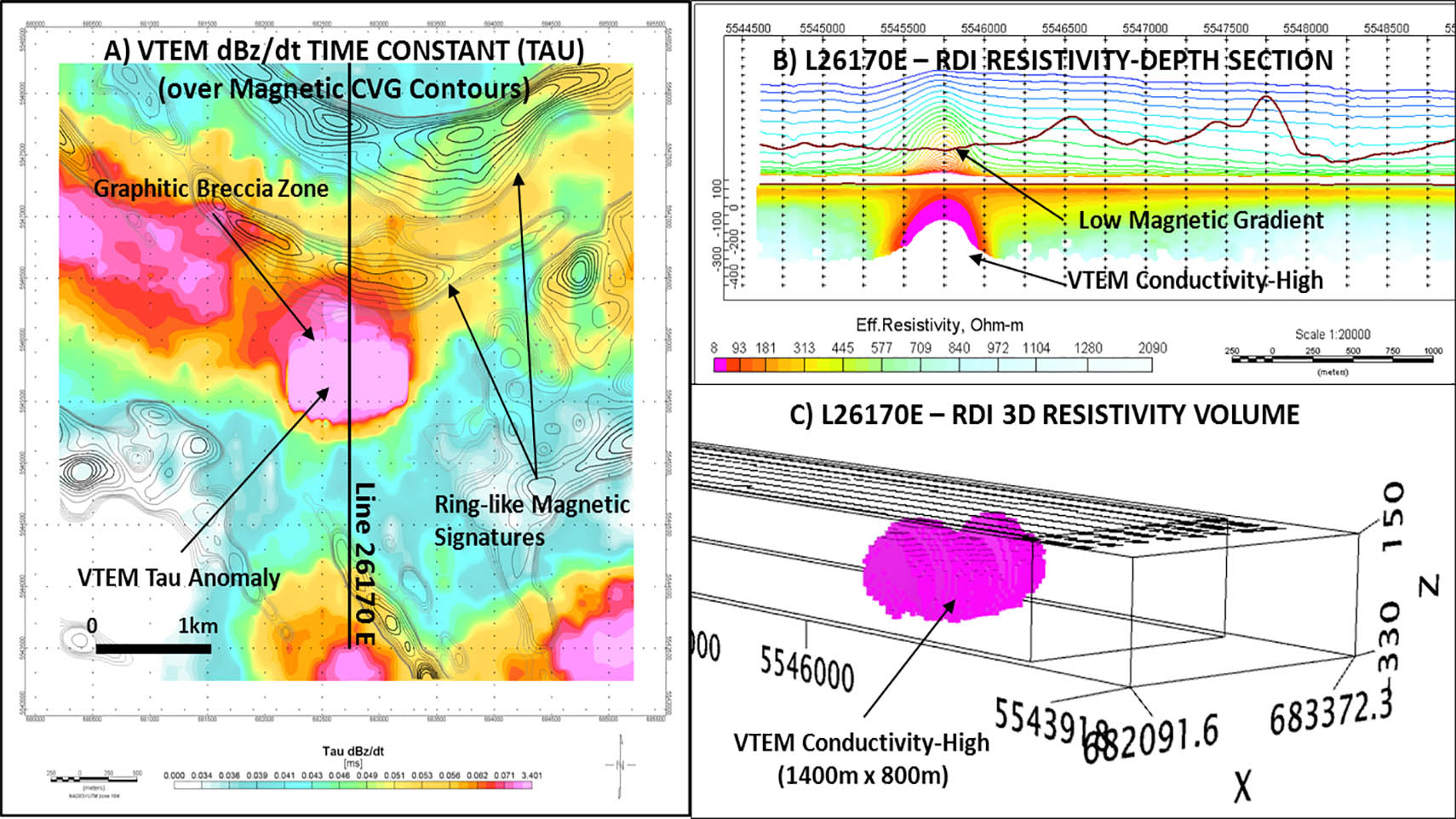For a PDF of this paper click here
Overview
On January 19TH, 2012, Zenyatta Ventures Ltd. announced the discovery of a very rare type of hydro-thermal graphite deposit on its Albany Project in northeastern Ontario (Fig. 1) based on drill testing of anomalies identified by Geotech’s VTEM™ max airborne electromagnetic system in 2010 (Zenyatta Ven-tures Ltd., press release, 14-May-2013). A drill hole on claim block 4f was designed to test a strong, large airborne EM conductor measuring 1400m x 800m north-south (Fig. 2a). The hole intersected eight (8) separate and extensive breccia zones consisting of variably sized granitic fragments set in a black matrix containing graphite (Fig. 2b). Since then, fifteen (15) drill holes have been drilled, with up to 360m of graphite mineralization intersected in a single hole and another intersecting mineralization down to 500m depths (Fig. 2c). Graphite mineralization appears to consist of as many as two separate graphitic breccia pipes which are typically surrounded by a zone of graphite overprinted syenite. The Zenyatta Graphite discovery is located 30km north of the Trans-Canada Highway.

Figure 1: A) Albany Graphite property location, and B) Albany Graphite property geology and VTEM™ survey lines (courtesy Zenyatta Ventures Ltd.)

Figure 2: Albany Graphite Zone: A) VTEM™ Time-constant anomaly contour and ddh locations, B) Schematic east-west cross-section across hydrothermal breccia pipe, C) North-South DDH Section through deposit (www.zenyatta.ca)
VTEM™ Survey Results
Results of the VTEM™ and Magnetic survey performed in 2010 identified a significant EM conductive anomaly on the property that lay in close proximity to a large circular, ring-like magnetic signature further north (Fig. 3ab) and that is consistent with a multi-phased, mafic-ultramafic-alkalic intrusive complex. The property geology (Fig. 1b) indicates that, below a thin quaternary sand-till layer, the survey area is mainly covered with relatively thin flat-lying Paleozoic Ekwan River Fm sandstones, shales, dolostones, silt-stones, that lie unconformably over Precambrian alkalic intrusive rocks, gneissic tonalite suite rocks, and metasedimentary paragneisses and migmatites that outcrop to the south. The Albany breccia pipes are hosted within the Proterozoic-aged alkalic intrusion.
The Albany Graphite Deposit EM anomaly (Fig. 3a) and is observed along multiple survey lines, with val-ues of Time Constant (Tau) between 1ms – 3 ms (Fig. 4a) and a low resistivity of <10 ohm-m from RDI imaging (Fig. 4bc) that are consistent with a mineralized bedrock source.
However, the Albany Graphite EM anomaly is also distinguished by its weak magnetic low response (Figs. 3b & 4b) that is consistent with either remanently magnetized magnetite or pyrrhotite, or else dia-magnetic graphite, which at the time caused it to be initially less favoured, geophysically, relative to other neighbouring anomalies.
Regardless, its presence inside a favourable geologic structure resulted in its being drill-targeted for nickel sulphides but which led to the discovery of the hydrothermal graphite breccia zone by Zenyatta in Fall-Winter 2011. Ground follow-up using surface TEM have identified 2 separate graphitic breccia zones (East & West). Exploration remains ongoing on the property in 2013.

